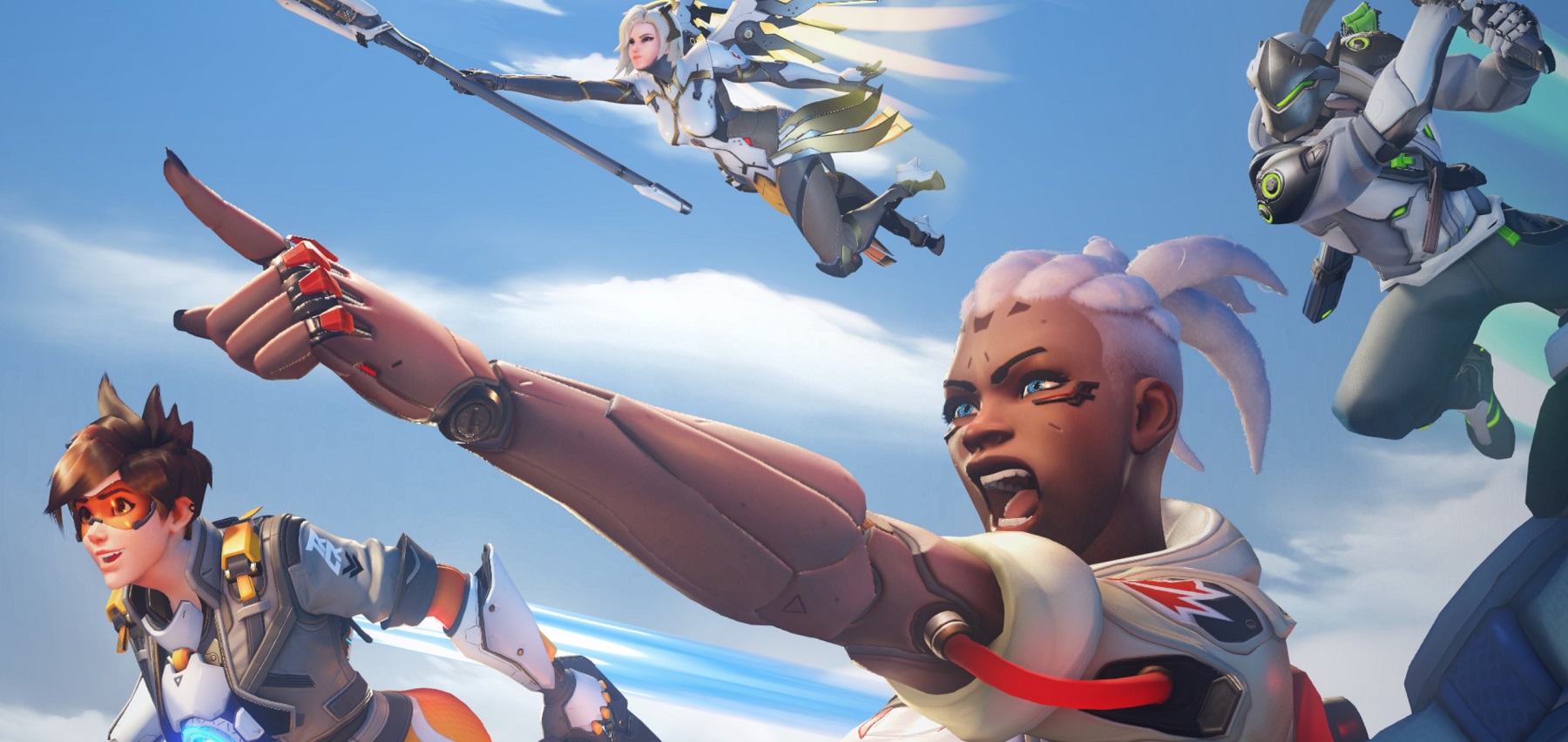Overwatch died so that Overwatch 2 could live
At launch, Overwatch was a powerhouse. It was the first new real IP from Blizzard in a long time, and from beta through the first few years, it was widely beloved by many, and even lead to a burgeoning (though late) eSports scene. But then the troubles started.
Overwatch became staler as the team re-used the same events, and slowed with new hero releases. Critical team members left, and Blizzard was turned upside-down by some egregious activities at the company. Many games at Blizzard, Overwatch included, haven’t recovered from everything that happened.
Can Overwatch 2 bring the series back into the forefront? Well, it depends on a few things.

Overwatch 2 (PC [reviewed], PS4, PS5, Switch, Xbox One, Xbox Series X)
Developer: Blizzard
Publisher: Blizzard
Released: October 4, 2022
MSRP: Free-to-play (with microtransactions/season pass)
So what’s different? Here are the biggest changes for Overwatch 2:
- Overwatch is now a 5v5 game, down from 6v6
- Three new characters are out at launch (Sojourn, Junker Queen, Kiriko)
- A new mode called Push is in (which asks two teams to fight over an objective), and six new maps
- With the move to free-to-play, there’s a season pass now with a premium tier
Thankfully, all of my prior stuff from Overwatch transferred in, even in the pre-release period. All the old cast members now have an additional “Overwatch 2” skin, which was unlocked by default. Although the rollout and complete wipe of the original game isn’t ideal for a number of reasons, at least this part is being done right: and the same goes for cross-progression going into Overwatch 2.
When launching into a game though, I found myself still getting used to the 5v5 format, as well as some new adjustments. A launch patch will be altering several aspects of the game, including a movement/reload buff for damage role players after they get a kill, and all heroes will refund up to 30% ultimate power on hero swap.
I’m sure some folks are going to butt up against it, but to me, most of the alterations felt natural. Many of the changes are a sleek way to keep the game fresh, albeit at the cost of erasing the original game from existence. Now the team has the tough challenge of rebalancing this brand new format in perpetuity (or at least until Overwatch 3 erases Overwatch 2).
The new cast members help add to that new sense of tactical nuance. I talked quite a bit about Sojourn in my beta impressions, and I still feel roughly the same about her going into launch (she’s by no means going to be my main, but it’s fun to see her in games mixing things up). Junker Queen, however, brings a much-needed tank into the mix, and has an attitude to boot. Her aggressive style is going to be really appealing to a lot of players, and her commanding shout (which buffs nearby teammates) is a cool callback to barbarian/warrior playstyles. Her voice actor is also on point and fits the character well.
Kiriko is a pretty cool support character, focusing on talismans (which can heal) and kunai as her primary source of damage. The classic intuitive Overwatch design is still present, as she holds her talismans on the left side of the screen (left-click) and her kunai on the right (right-click). She also has a snap-use protection charm that can make a group of teammates invulnerable for a brief moment; and sports killer traversal skills with a teleport that goes directly to an ally, and wall-climbing capabilities.
Her ultimate is a bit like Hanzo’s Dragonstrike, but this time it’s a kitsune that grants beneficial effects for her team. She’s interesting because she can change a single push with a well-timed invulnerability charm and her ultimate. Plus, I love climbing around every level, including all the old ones, with her wall-crawling. For me, the gameplay mostly checks out. Now it’s time to venture into darker territory.
The Season Pass reward track is actually much simpler than the confusing pre-launch info rollout made it seem. So presently, at least for the first season, there’s a single “battle pass” that has 80 tiers. Free players can get some rewards from it, and premium players will unlock things at every track. Purchasing levels (which some passes allow or disallow, depending on the company) is an option. Here is everything that comprises the first Overwatch 2 season pass free track:
- Newest support hero, Kiriko (for new players who won’t have her already)
- 2 Epic Skins
- 1 Weapon Charm
- 2 Souvenirs
- 1 Highlight Intro
- 14 additional items (emotes, victory poses, name cards, sprays, player icons, etc.)
- Prestige Tier Titles (8 earnable titles available only after completing the entire pass)
And here’s what you get from the premium track:
- Immediate access to Kiriko
- 20% XP Battle Pass Boost
- 1 Mythic Skin
- 5 Legendary Skins and 1 Epic Skin
- 3 Play of the Game Intros
- 4 Weapon Charms
- 3 Emotes
- 3 Souvenirs
- 6 Poses
- 6 Name Cards
- 30+ additional cosmetic rewards
To buy into the premium pass each season, it’ll cost you 1000 Overwatch Coins, or $10. Characters, “if they are included in a season pass” (not all of them will have one, as the current plan is offering characters in Season 1, Season 2, Season 4, and Season 6), will be unlocked at level 55 on the free track [this season it’s linked to Kiriko], and are unlocked automatically after buying the premium track. There’s also a shop with a limited number of items that can be purchased directly for coins. Phew! That’s most of it. Annoyed yet?
So there’s a lot of ways you can look at this. In short, it’s a lot like the Fortnite season pass system Epic created years ago, but worse. In Fortnite, players can earn premium currency directly from the pass itself, which will pay for the next pass. In Overwatch 2, you can earn coins elsewhere, but it’s expected that you’ll be able to pay for at least every other pass, roughly. For a free player, slowly clawing your way up the pass to level 55 to gain access to a new character is excruciating, even if Blizzard is locking them from ranked play for a token few weeks. For hardcore players, it seems like you’ll be dropping $10 a few times a year (with a nine-week cadence announced for seasons), which gives you instant hero access.
Then there’s the other wrinkle of brand new players needing to essentially start over from square one: including the requirement of unlocking the full original core cast. Plus, an SMS Protect link will be required at launch. It was a strange “this deal is getting worse all the time” rollout of information, especially so close to the arrival of the game.
Everyone is going to respond differently, and I’m kind of in the middle. At face value, the season pass system is fiddly. The rewards are not really high value, the lack of currency in the pass in 2022 is disappointing, and there’s nothing unique or inherently “Overwatch” about this. In the past Blizzard may have tried to innovate in some way or mix things up, but now they are following other genre leaders. It’s already leading to some negative sentiments toward Overwatch 2, and we’ll be keeping an eye on it as each season progresses. Ideally — unlike 343, which went through similar growing pains with Halo Infinite‘s pass — some of the lesser-liked kinks are worked out sooner than later.
Overwatch 2 doesn’t have the same cachet that Overwatch 1 did, but I can still see myself jumping in for a few matches after a long evening. The charm is still there, even if the delivery system has been muddled, and the game is no longer a premium product with easy-access characters that you can readily jump in and out of. Perhaps the PVE update can change that, but it has some work to do.
[This review covers the early access PVP portion of Overwatch 2. When the final version is released with PVE, we’ll provide a fully scored review.]





